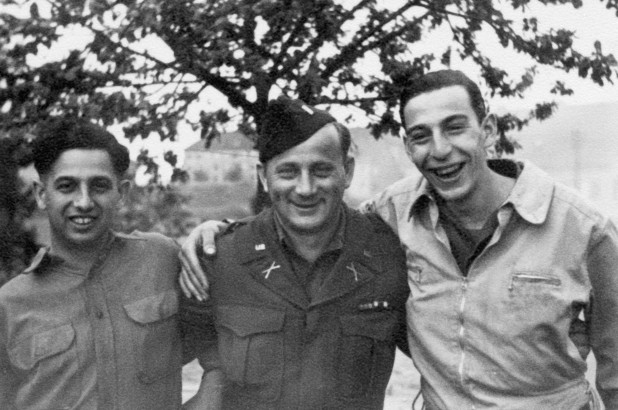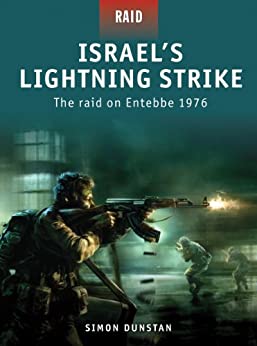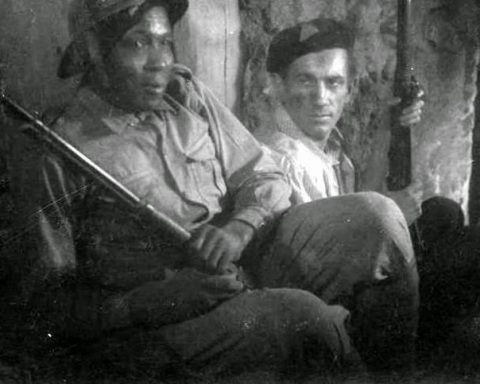
“Ritchie Boys” in training camp
They fled from Nazi Germany in the early 1930s when Hitler came to power. They returned to Europe as spies, as members of the elite group of the US Army. They were called the Ritchie Boys and they were powerful secret weapon of the United States in the pursuit of defeating Hitler. Young Jews did their job perfectly, and then they would join Nuremberg in a team interviewing Nazi prisoners of war.
Camp Ritchie was the first United States military intelligence training facility. This center trained nearly 2 thousand (some sources say that about 10,000) Jews born in Germany, that learned special techniques of intelligence and disinformation to fight the enemy. We should consider them unsung heroes of Second World War.
Many of them live to this day. In a fascinating book, “Sons and Soldiers. The Untold Story of the Jews Who Escaped the Nazis and Returned with the U.S. Army to Fight Hitler” written by Bruce Henderson, Ritchie Boys tell their story. They couldn’t do it earlier, because for many years after the end of the war, as members of the military intelligence, they were forbidden to talk about military and intelligence training in the US service. They never spoke each other in Hebrew. They changed German or Jewish names, destroyed memorabilia from the past, photographs and letters, erased old addresses from memory. Everyone got new past where they weren’t Jews.
Desperate escapes to United States
Nearly 8,000 German and Austrian Jews migrated to America before the Second World War. They have been fleeing since Hitler took power in 1933.
The next big wave of migration appeared after the “Kristallnacht”, the Jewish pogroms that took place on the night of November 9-10, 1938 in major German and Austrian cities. 7.5 thousand Jewish companies were destroyed, shops where burnt, 171 synagogues were razed, 91 Jews were murdered, and numerous cases of rapes were reported – all in the name of the new Ubermensch. 26 thousand people were taken to concentration camps, where most of them met their deaths.
Martin Selling was only twenty years old in November 1938, when he was arrested with sixty other Jews by Nazi police. They were detained in a local prison for two days, then sent to the Nuremberg prison. Martin was sent to Dachau, the first concentration camp that the Nazis had founded in 1933. Final Resolution – Hitler’s plan to eradicate all Jews wasn’t yet in place, so when he was eventually released from Dachau, he knew he had to run away – and he fled to America, where he had distant relatives. He regularly wrote letters to his mother, but when she stopped responding, he knew he had to go back and find her.
Similar stories were plentiful. Young men, Jewish refugees, wanted to fight. They were eager to fight Nazi Germany. The Pentagon realized that it was dealing with resourceful people, who could speak German and knew the enemy, so US Army formed Camp Ritchie (official name: Military Intelligence Training Center), in mid-1942, to train Jewish agents.
Personal war
Training at Camp Ritchie, in the mountains near Hagerstown, Maryland, was aimed at preparing staff for conducting a psychological war and performing secret intelligence and sabotage missions. Only Jews born in Germany, young anti-fascists who found shelter in the United States could take part in this training. For the most part, they were educated, smart men, full of determination and the will to actively oppose Third Reich.
– We fought in the American army, but it was a personal fight for us. We fought with every fiber of our being. We worked hard so nobody would be able to overtake us. We were crusaders. That was our war.
Tells Günther ‘Guy’ Stern, who strongly believed that defeating the enemy would allow him to find a family left in Europe.
Although they were members of the United States Army, they trained in German uniforms. They were proficient in intelligence, sabotage, subversive activities, in conducting psychological war on Germany, and on the front line tactics. They practiced the enemy’s language and they were taught how to conduct effective prisoner interrogations, also on the battlefield.
Before going to Europe, they practiced every day for long hours, and everything looked so real that when their “German” tanks rode through village Camp Ritchie, residents were convinced that the Nazi invasion was just taking place.
Their started their work in June ’44 after Normandy invasion. Under fire, they extracted information from the prisoners and identified enemy units. They could quickly translate the enemy reports and gather intelligence from the field.
Unwanted past
After the war, some were employed as sworn translators during the Nuremberg trials. The interrogations of German prisoners of war in Nuremberg were long and arduous. Some confessions of the defeated Germans were obtained through torture. According to some historians, these tasks were also performed by agents from the Ritchie Boys.
– We could not force these birds to say otherwise – A.H. Rosenfeld, judge in Nuremberg and a colonel in the American army.
They pledged to keep secret about their wartime experiences. They were silent for many years. Just after the war, some of them chose to stay in occupied Germany to create new, democratic government structures. Many of them returned to the United States.
Today, still little is known about them for a variety of reasons, also because they were not part of veteran organizations and mostly because as a members of military intelligence, they are bound to secrecy. But one thing is sure – these Jewish heroes of US Army fought with dogged determination to defeat the Nazi menace.
Quotes come from “Sons and Soldiers. The Untold Story of the Jews Who Escaped the Nazis and Returned with the U.S. Army to Fight Hitler” written by Bruce Henderson. It’s a thrilling book, so check it if you’re interested in this story!




